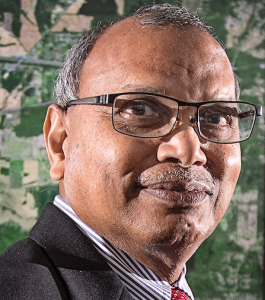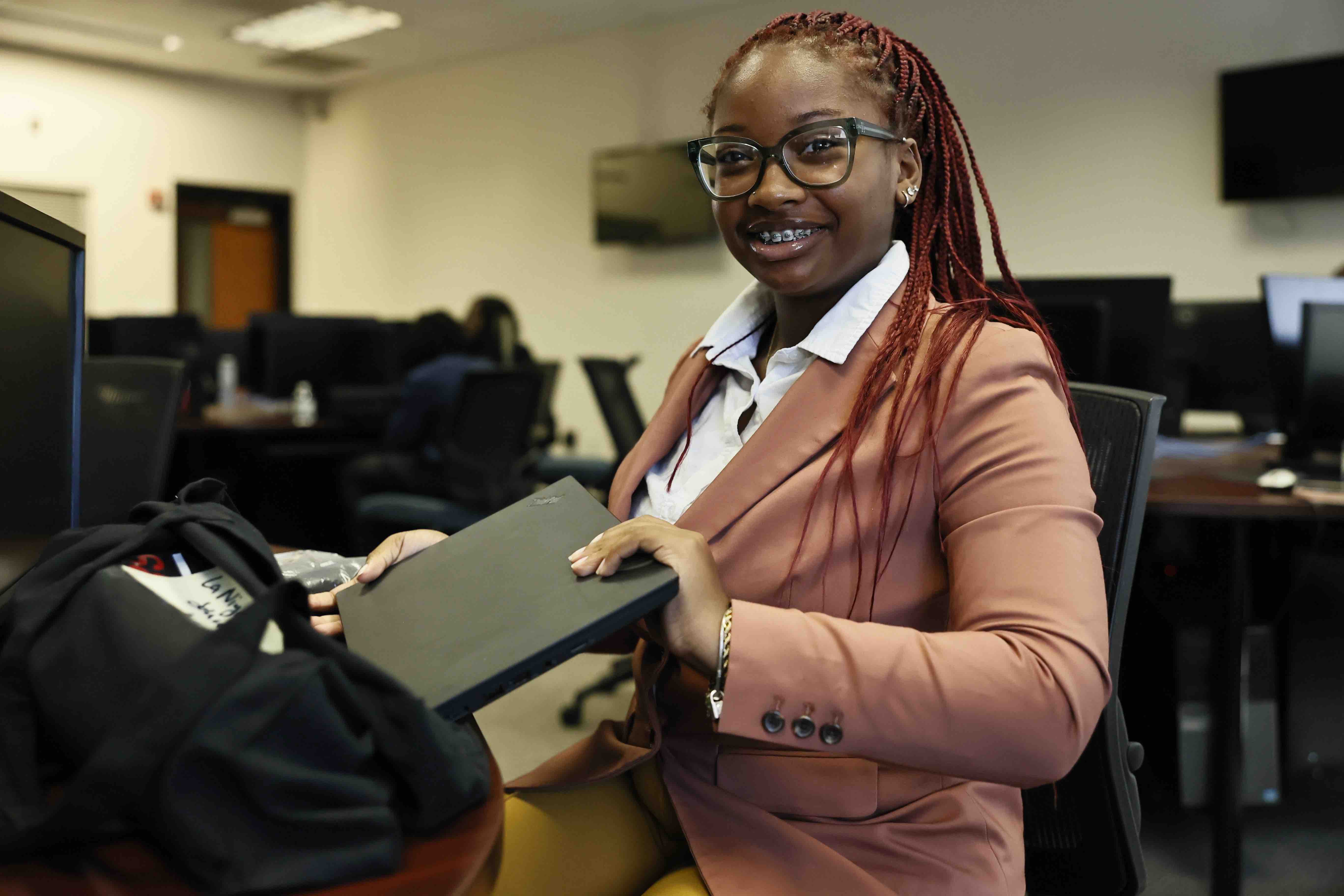![]()
[hr]JSU’s College of Science, Engineering and Technology (CSET) has developed a cost-saving Sustainable Irrigation System (SIS) that could be used to determine just the right amount of water needed to saturate soil for gardening and agriculture.

The smart device, which includes sensors and an app, automatically activates a sprinkler system if stored rainwater is insufficient.
CSET developed SIS after a challenge from various organizations to build sustainable applications in local areas. The American Association for the Advancement of Science (AAAS), the National Science Foundation (NSF) and the United Nations’ Sustainability Program are promoting better food, water and energy practices. These are to be achieved through the development of sustained resources, including renewable solar energy, with the goal of reducing reliance on conventional resources.
The importance of sustainable communities
As a result, Dr. Ramzi Kafoury, associate professor in the Department of Biology and director of Sustainability and Technology Systems in CSET, created and directed the project. He’s working collaboratively with several CSET students who were responsible for developing an app and Dr. Francis Tuluri, a JSU professor in civil and environmental engineering. Ramzi and Tuluri handled the circuitry and sensors.
“We have to create sustainable communities,” said Kafoury, drawing attention to the world’s current challenges – the nexus of food, energy and water resources. He shudders at the misuse of finite resources such as coal, sulfur and crude that drastically impacts human health. He cites the rise in asthma and respiratory illnesses as consequences, along with global warming.
“The World Health Organization predicts population growth to exceed 9.3 billion inhabitants by 2030,” Kafoury said. He winces at the thought of resources being depleted but is encouraged that the world’s government leaders, scientific communities and organizations are attempting to address these issues. He’s especially pleased that this global vision is shared and encouraged by administrators at JSU.
For their part, JSU developers of the SIS apparatus are using existing and innovative technologies to confront potential environmental problems. The system hasn’t been commercially deployed yet, but that is expected to change soon because “everything is in place,” Kafoury said. This device is scalable, too, meaning that it can be used for gardens and expanded to the agricultural industry.
Kafoury said the technology relies on circuits and sensors to gauge water content of the soil.

His colleague Tuluri said, “Micro-controllers program the on/off function. When rainwater is available the controller will cut off the main supply through automation. This is the heart of the controller,” he said. If natural energy is not available, the controller will activate traditional energy. These functions are monitored by an app.
Furthermore, Tuluri said, the microsystem will interplay with solar panels, and it uses cost-effective micro-controllers along with a smartphone app.
Reliance on solar panels and rainwater collector
The basic components for SIS are solar panels and a rainwater collector (reservoir) – both of which are natural. These are combined with regular electrical power and the standby water supply.
Tuluri said his desire is to see this affordable system used for gardens, large-scale systems and in developing countries, where water supply is particularly scant. This would cut the costs of food production and lead to a constant supply of water, as needed.
Anthony Gomes, a CSET graduate student studying computer science, wrote the coding for the device and handled the smartphone applications. Gomes said SIS simplifies gardening because it saves time, money and gauges soil temperature.
“You don’t have to worry about watering every single day. You don’t have to worry about water levels. It gets power from the sun.” He said the use of natural rainwater to irrigate the soil is also beneficial. For now, he, too, sees far greater use for such a system in Asia and Africa, where water supply is far less than that of the U.S. He agrees that population and economic growth, urbanization, current state of resources and climate change make SIS a viable solution.

“With SIS, we want to help out people in their communities and transfer the technologies to communities. We want to give them smart solutions,” Gomes said. “So, the CSET team combined different things out there to come up with a better idea.” JSU’s app helps control soil irrigation by letting users manage the on/off switch for sprinklers and the pump, he said.
So, what’s next for JSU and its new irrigation system?
Thinking outside the box
Kafoury said, “Currently, we’re working with JSU’s Office of Technology Transfer, Commercialization and Research Communications to market and add potential investors.” He, too, wants to transfer this technology to the community and maximize its potential by reducing significant reliance on oil and coal.
Gomes said he learned a lot about “this excellent solution that is inexpensive and sustainable for individuals and organizations willing to think outside the box.”
Tuluri said, “We have to make sure everything works. This mini-system can be scaled up to agriculture. If we scale up to this level, it could take another year or two.”
Looking further ahead, Kafoury said, “If we can reduce misuse of water by 30 percent and increase the use of renewable energy 30 percent to 40 percent in the near future, this would have a significant impact on sustaining our resources. This technology could significantly limit emissions in the atmosphere.”
Moreover, Kafoury said, entrepreneurship and other career opportunities abound if JSU transfers this knowledge and training to its students.






